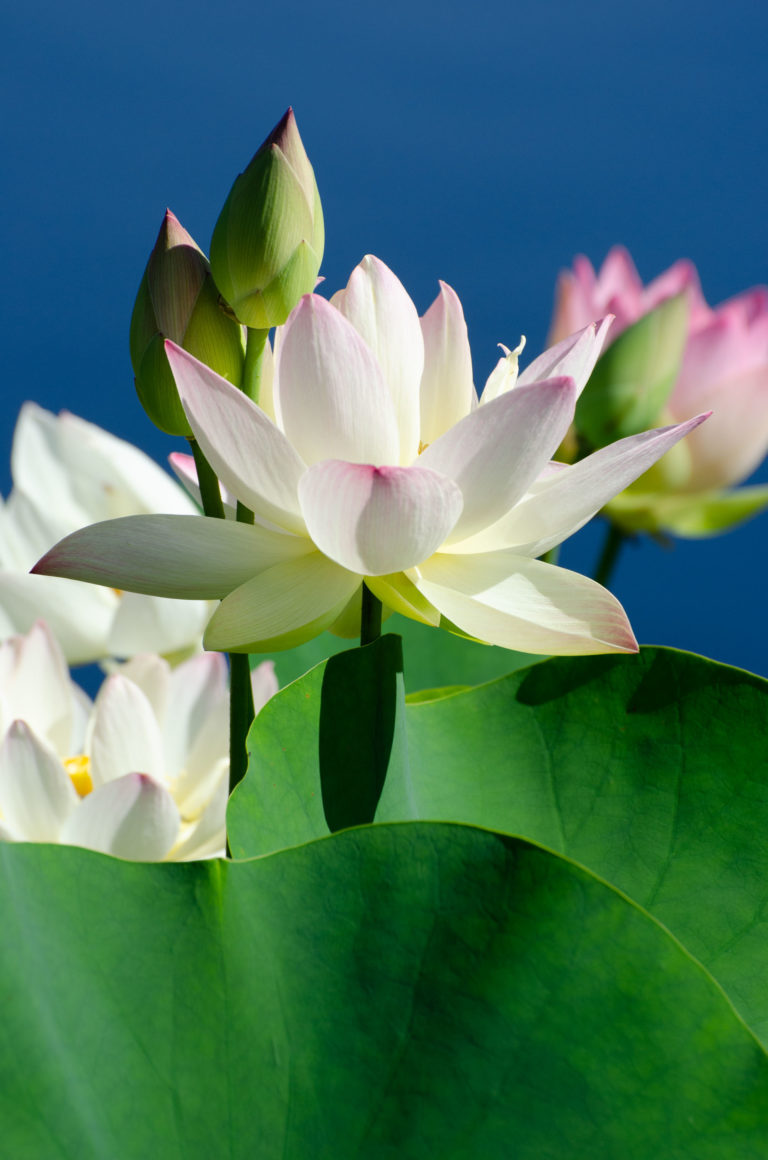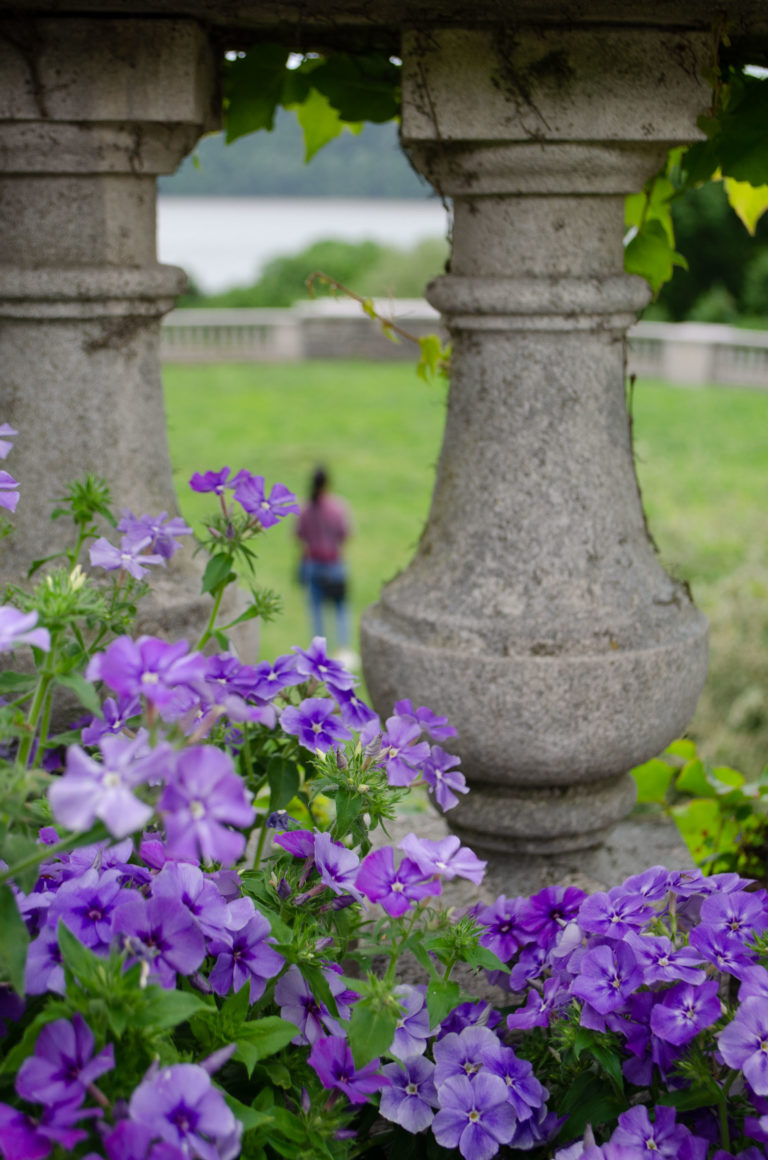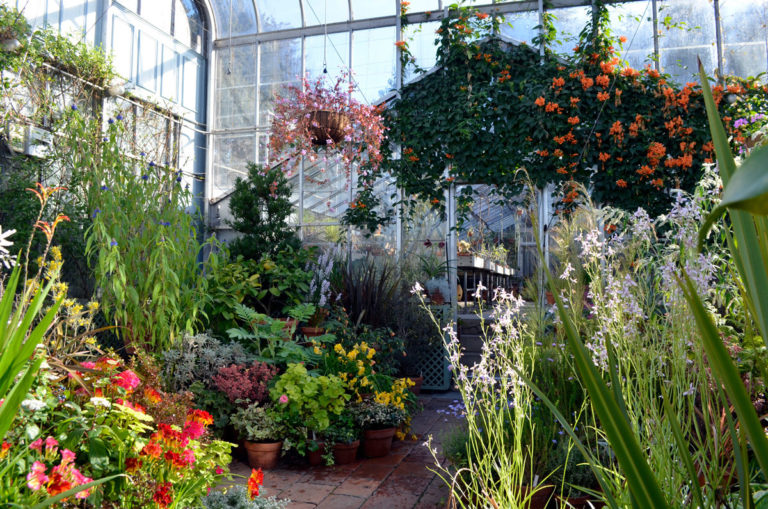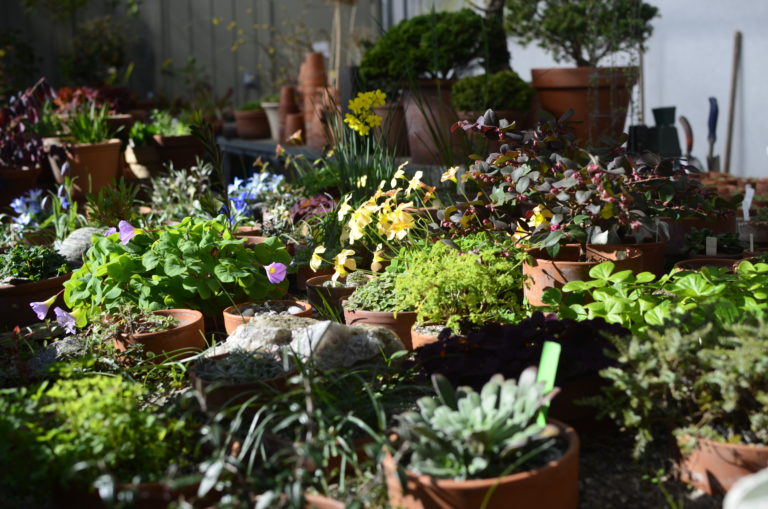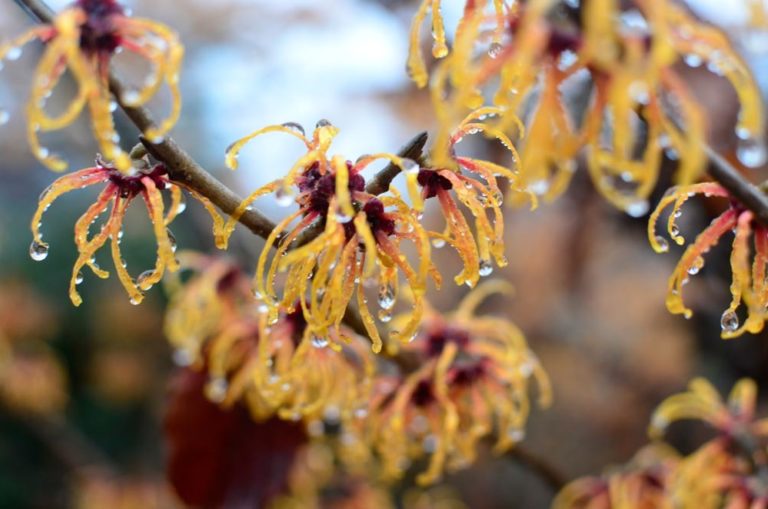
Winter-Blooming Trees and Shrubs
February 20, 2020Late February might still be winter but it is when some of our trees and shrubs burst into flower. Many of them originated in parts of East Asia where winters might be cool but are often interspersed by warm periods—times when a range of pollinating insects of those regions emerge and get busy. With few other plants competing for the attention of these pollinators, those that are in bloom are more likely to be visited.
Shown above: Witch hazel Hamamelis × intermedia ‘Orange Beauty’, blooming across from the Perkins VIsitor Center, sparkles after a fresh fall of rain.
Generally, our winters in the Northeast US are more consistently cold but here, too, we often experience mild spells. When they occur, plants introduced from elsewhere behave exactly as they would at their original home. We may not have the same pollinators, but this doesn’t prevent flowering. Successful pollination results in viable seed for another generation, but plants will still bloom even if not pollinated.
Some of the showiest of the winter-blooming shrubs are the witch hazels (Hamamelis). Most of those that flower in February are cultivars of Hamamelis × intermedia, a hybrid cross between two Asiatic species: H. japonica and H. mollis. Among the ones we have at Wave Hill are two lovely orange-flowered cultivars: ‘Orange Beauty’, which has been in bloom for a few weeks, and ‘Gingerbread’, just opening now. Yellow-flowered ‘Primavera’ is showing off its cheery flowers right next to the front door of Wave Hill House.
In complete contrast to the large and showy witch hazels is the low-growing and demure Himalayan sweet box (Sarcococca hookeriana var. humilis). Evergreen and with a dense growth habit, it produces small, greenish-white flowers, held closely among the foliage. Although easily overlooked, on a mild day it makes its presence known by filling the air with a sweet, slightly spicy aroma. It can be found in several spots—at the southwest corner of the Wild Garden, in front of Wave Hill House and opposite the front of Glyndor Gallery, just across from the entrance to the picnic area.
Evergreen mahonias (Mahonia spp. & cvs.) show off spikes of scented, yellow flowers, held above glossy, holly-like leaves. Japanese mahonia (Mahonia japonica) graces an otherwise rather prosaic space near Wave Hill’s delivery gate. Other mahonias dot the landscape, tucked into protected corners where they are not exposed to too much winter sun. Evergreens, especially broadleaved species, are prone to drought in winter because they cannot switch off photosynthesis—whenever the sun shines, carbohydrates are being manufactured. This is a process that requires a lot of moisture and, when everything is frozen, lost water cannot be replaced and the foliage will desiccate.
Wintersweet (Chimonanthus praecox) is a large, deciduous shrub native to China. It is not especially notable for most of the year but a few warm days in winter will stir its plump buds to pop open and reveal the most wonderfully scented flowers. The petals are a creamy, almost transparent white and the center of each flower is tinted a pinkish-red. A serious freeze might cause these to shrivel, but unopened buds usually survive and are capable of producing a fresh crop of flowers the next time more favorable conditions come along. Our plant sits beside the front entrance to Glyndor Gallery.
A few, pale-pink flowers of the Higan cherry (Prunus subhirtella ‘Autumnalis Rosea’) are open right now but they are very susceptible to rapid temperature fluctuations: even a mild freeze can kill them and a severe frost can injure the remaining buds. Despite these potential setbacks, another show of blossom might still occur in spring. The common name of Higan cherry derives from the Japanese Buddhist holiday of Higan, which is celebrated during the spring and autumnal equinoxes. Presumably, it is a reference to the tree’s back-up bloom-time in early spring.
Not exactly subtle, the bright-yellow flowers of winter jasmine (Jasminum nudiflorum) are hard to overlook. It is a deciduous, trailing vine native to northern China and grows into a thick, shrubby groundcover. Situated along the top of a retaining wall, its arching stems will hang over the wall’s face, creating a delightfully informal effect. Although devoid of foliage, these stems are loaded with buds and they start to open as soon as temperatures lift in late winter. As with the wintersweet, a hard freeze might kill some of the open flowers, but many buds will escape damage and bloom later in the winter. Look for it in the northeast corner of the Flower Garden.
So, with all this blooming going on, and there being little chance of pollination, one might ask how these plants are reproduced. The answer is that most of them are propagated from cuttings or by grafting—common techniques used in the production of many woody plants in gardens and nurseries.
By Charles Day, Wave Hill's Ruth Rea Howell Senior Horticultural Interpreter
